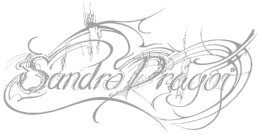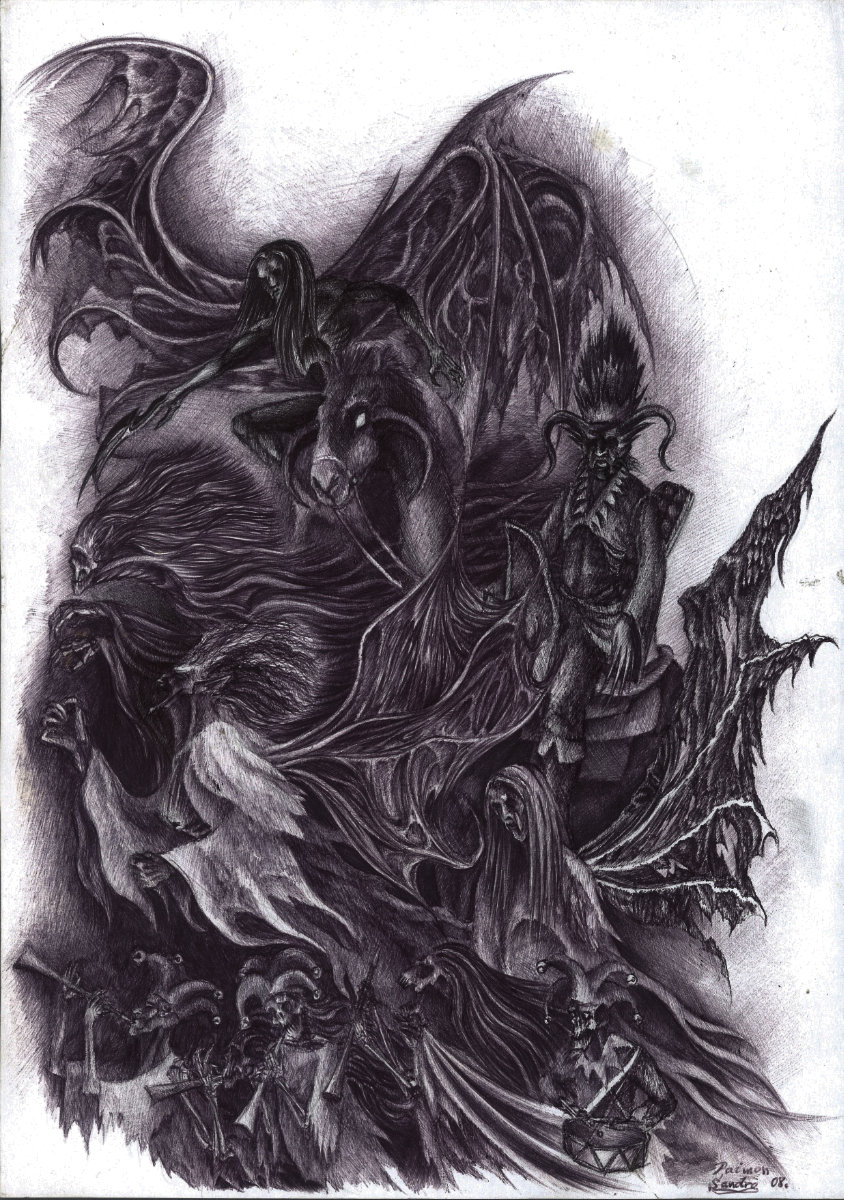Technique: pen drawing
Size: 297 × 210 mm
SOLD
Description of the work
By my current standards, it is a simple beginner drawing, made when I was twenty-three years old, with a ballpoint pen on ordinary copy paper. The goal of the work was to illustrate the then upcoming Czech edition of the Goetia book (The Lesser Key of Solomon – Lemegeton), which was to describe the fifty-two infernal entities according to the Hermetic tradition. Therefore these forces, described in a somewhat tight manner, were portrayed accordingly as very evil, insidious, and under the predictable stigma of being outside the divine law.
Paimon
One of the kings of hell obedient to Lucifer is depicted as the ruler of the west. His qualities include effeminacy, exaggerated gallantry, and being surrounded by ghosts of artists. He is considered by many occultists to be the spirit and inspirer of decadent art. Thus I portrayed him accompanied by souls of deceased musicians, poets, jesters, actors, and fallen angels. Since the global occult scene is decentralized and abstract, with it being very difficult to materially prove any idea, there are rather disparate views on the questions of belief and myth. Despite that, most spiritual currents of thought agree that Paimon represents one of the most powerful forces in general, which is also mentioned in other magical grimoires.
Occult issues surrounding Goetia
I would like to say that Goetia cannot be described as a historical source for any religious doctrine, although it does adopt a Christian to Catholic position by dividing the daimons (Socrates’ inner voices of intuition) into evil demons and good angels. This current abandons the original Greek legacy and instead privileges the ethereal conflict between heaven and hell begun before the creation of man with the casting down of Lucifer from heaven to earth. However, it can be viewed as a historical source regarding religious and spiritual beliefs of the time. At that era, people had half of their innate qualities suppressed, many taboos from bashing of free-thinking to denial of sexual lusts prevailed, and any urges, including progressivism, were generally viewed as turbulent and untamable. The concept of magic was socially unacceptable. To put it in perspective, the book’s origins date back to around the very early 15th century, and it only began to become widespread across Europe in the early 18th century. Afterwards it got its enrichment from Alister Crowley in the 20th century. The book contains a lot of religious nonsense, for example a claim that the mythical ancient Phoenix is a demon who rules a part of hell, dominates the legions of hell, and so on.
More previews of the work
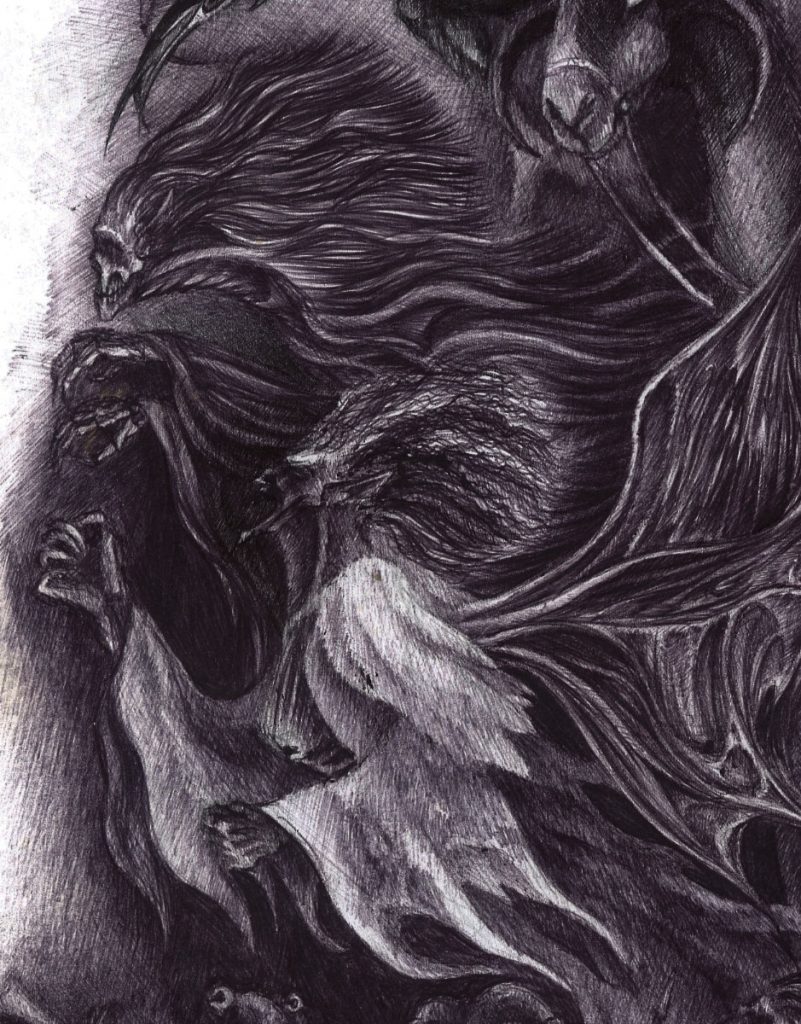
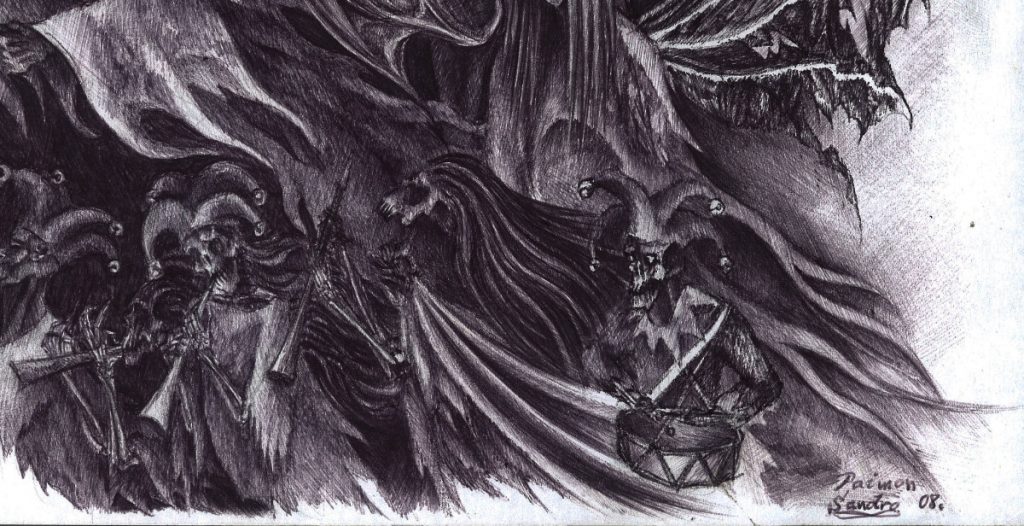
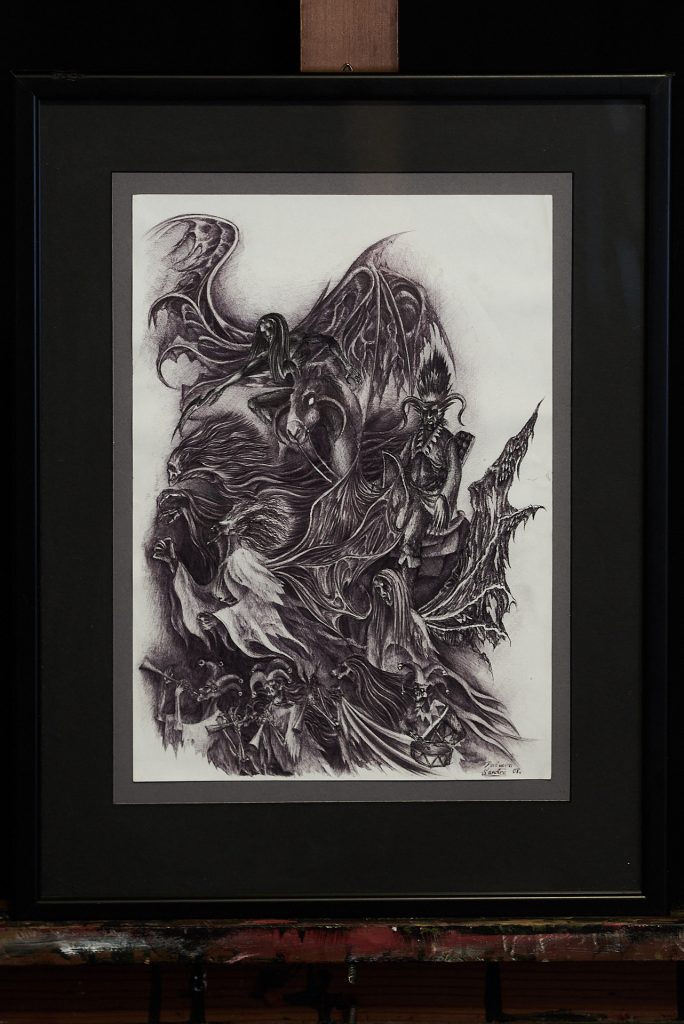
editing: Arianne Perrier
web design: Brbla
